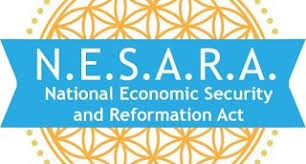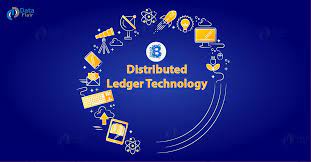QFS - CROSS BORDER PAYMENT METHODS BY THE QFS NESARA GESARA : NON-CBDC CROSS BORDER PAYMENTS MODELS
NON-CBDC CROSS BORDER PAYMENTS MODELS
This annex summarizes the main current Cross-Border Payment Models—alternative to corresponding banking— that are not based on CBDCs.
The annex concludes with some considerations on the future outlook of cross-border payments.
PRIVATE LABEL CRYPTOCURRENCIES
In this model, consortiums of Commercial Banks or Nonbank entities issue Digital Tokens on an agreed upon Digital Currency standard to execute Cross-Border Settlement and Other Exchanges of value in a closed system.
The Digital Token is typically backed by central bank issued fiat currency in the form of collateralized liquidity or other asset or liability deposits at or guaranteed by the central bank or some other trusted entity.
. See What is ‘Utility Settlement Coin’ really?, available from: https://ftalphaville.ft.com/2017/09/18/2193542/what-is-utility-settlement-coin-really/.
The two examples of these are the Utility Settlement Coin (USC),66 and the JP Morgan Coin (JPM Coin).
See J.P. Morgan creates digital coin for payments, available from: https://www.jpmorgan.com/global/news/digital-coin-payments
Cross-Border settlement using either USC or JPM coin leverages the blockchain to ensure faster and more secure Cross-Border payments by straight-through Processing and improvements to Transparency. USC is an Experimental Digital Cash instrument built on DLT and originated by the Swiss Global Financial Services company UBS in partnership with Clearmatics Technologies in a consortium of fourteen banks. Is of 2019, the consortium raised $63 million in funding from the 14 shareholder banks.
Drawing from the field of computer science, the term “atomic” refers to an operation that requires a set of distinct changes to take effect altogether for the operation to be completed; otherwise, the operation has no effect and is reversed. Applied to financial transactions, an atomic transfer is complete if a number of events take place altogether; if it this does not happen, the transfer is not executed. As an example, consider a 100-dollar funds transfer from account X to account Y: first, the balance of account X must be checked, and 100 dollars are removed from the account and, second, 100 dollars are added to account Y, and the balance of account Y is checked as the end. If the entire operation is not completed as one whole “atomic commit,” then several problems could occur. If the system fails in the middle of the operation, after removing the money from X and before adding into Y, the 100 dollars have just disappeared. Another issue is that if the balance of Y is checked before the 100 dollars is added, the wrong balance for Y will be reported. With an atomic transfer neither of these circumstances would materialize. In the former case, the transfer would be rolled back, and the money would be returned to X. In the latter case, the check of the balance of account Y would not occur until the transfer were completed.
In the USC model, large private banks and FinTech Firms Create Digital Tokens (i.e., USCs) representing money from multiple countries that can be exchanged on a Distributed Ledger Platform. The Digital Token is fully collateralized by the Cash Balances of participating Banks which are held on the Books of the Central bank. Unlike Bitcoin, USC is created through Liability securitization. The Decentralized Nature of USC enables its members to settle interbank positions more efficiently. Moreover, USC may also be issued by transferring non-operating Cash Balances into a special purpose vehicle (SPV) that manages cash without a profit-making objective.
This has the benefit of reducing the regulatory Collateral requirements of the participating financial institutions by moving non-profitable high liquidity flight risk deposits off their balance sheets while being able to use the liquidity for transaction settlement purposes.
Similar to USC, JPM Coin is also an experimental digital coin built on the DLT, originated by J.P. Morgan Chase. JPM coin is a digital token, redeemable in a 1:1 ratio to the US dollar. The purpose of JPM Coin is transferring value in Cross-Border Settlement. JPM Coin is permissioned, its users are exclusively institutional customers, and it employs the Quorum Ledger.
Additionally, in 2017, J.P. Morgan launched the Quorum-based Interbank Information Network (IIN), as a pilot program. The IIN allows member banks to exchange payment information to overcome the challenge of sharing such information in cross-border settlement.
As of April 2019, there were 220 member banks across the world participating in the IIN. . These included four of the Canadian designated systemically important banks
Both the IIN and JPM Coin aim to address the shortcomings of correspondent banking in terms of information sharing and settlement. However, they may also be disruptive to central clearing services offered by organizations such as Payments Canada and sideline the traditional wholesale payments space. Looking at potential disruption to wholesale payment systems is crucial. A business case for USC would be to provide a vehicle for settlement within derivatives markets.
An example would be the market for Cross-Currency and interest rate swaps. To this end, it is important to note that the gross notional value of outstanding contracts in the over-the counter (OTC) derivatives markets at the end of Q2 2018 was US$595 trillion while the gross market value of OTC derivatives in the same period was US$10 trillion. In the context of disruption to existing wholesale payments clearing and settlement infrastructures such as Canada’s Large Value Transfer System (LVTS), payments made as part of the trade life cycle events in broader securities and derivatives markets may no longer require such infrastructure.
Indeed, the instantaneous cross-border transfer of digital tokens exchangeable for cash assets eliminates the need for cumbersome processes of intraday collateral management required by existing wholesale settlement systems. Moreover, as such tokens are not tied to the operating hours of the wholesale payments systems across jurisdictions, transactions are free to flow frictionlessly hours a day and seven days a week.




Comments
Post a Comment